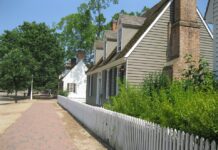An Introduction to Cambodia – General info and Tips
▌The Angkor Wat complex is the most exquisite example of Khmer architecture. Built in the early 12th century for king Suryavarman II as his state temple, it remained an important spiritual centre for centuries– first Hindu, and afterwards Buddhist. Out of the reach of tourists during the civil war, it has regained worldwide attention after being displayed in the 2001 movie Lara Croft: Tomb Raider.

The Kingdom of Cambodia is a constitutional monarchy situated in Southeast Asia and counting a population of more than 13 million people. Most Cambodians are Theravada Buddhists of Khmer extraction, but the country is home also to a substantial number of Cham and small hill tribes.
The country borders Thailand to its west, Laos to its north, Vietnam to its east, and the Gulf of Thailand to its south.From the 9th century to the 15th century, Cambodia represented the center of the Khmer Empire, with Angkor as a capital.
The Angkor Wat, the empire’s main spiritual site, is a symbolic reminder of the time when Cambodia was a major powerrulung most of the Indochinese peninsule, and remains the country’s top tourist attraction.From 1863 the country was a protectorate of France, which lasted until 1953, when the country received independence.
Cambodia covers an area of about 181,040 square kilometers. It has 443 kilometers of coastline along the Gulf of Thailand.
The most distinctive geographical feature are the lacustrine plains formed by the inundations of the Great Lake. It measures about 2 500 square kilometers during the dry season and expands to about 24 000 during the rainy season. This densely populated plain, devoted to wet rice cultivation, is the heart of Cambodia.
Most of the country’s territory lies at elevations of less than 100 meters above the sea level, the exceptions being the Cardamom Mountains (1,813 meters of elevation) and the steep escarpment of the Dângrêk Mountains situated along the border with Thailand’s Isan region.
The tourism industry is the country’s second-greatest source of hard currency in Cambodia after the textile industry. More than 60% of visitors go to Angkor, and most of the remainder to Phnom Penh. Other tourist highlights include Sihanoukville (Cambodia’s only port), whits its popular beach, and the region around Kampot, including the Bokor Hill Station.
The celebrated temples of Angkor constitute the Cambodia’s greatest tourist attraction. The nearly 100 temples represent now the sacred remains of what was once a much larger administrative and religious centre, and were constructed between the 9th and 13th centuries to glorify a number of Khmer kings. The three most splendid temples are Bayon, Ta Prohm and the enormous Angkor Wat. Most of Angkor was abandoned in the 15th century and it was gradually cloaked by jungle. Efforts were undertaken to clear away the exuberant vegetation which threatened to completely destroy the monuments, and restoration of the temples still undergoes.
The Angkor Wat complex is the most exquisite example of Khmer architecture. Built in the early 12th century for king Suryavarman II as his state temple, it remained an important spiritual centre for centuries– first Hindu, and afterwards Buddhist. Out of the reach of tourists during the civil war, it has regained worldwide attention after being displayed in the 2001 movie Lara Croft: Tomb Raider.
The Bayon is the other highlight of Angkor. Built in the 13th century as the state temple of the king Jayavarman VII, it was the centre of the then capital and bears 54 towers, each decorated with four smiling faces.
The largest and most populous city of Cambodia (about 1 million citizens), Phnom Penh was known in the 1920s as the Pearl of Asia. Renowned for its traditional Khmer and French influenced architecture, it is a major tourist destination in Cambodia, as well as in Indochina as a whole.
The main tourist attractions in Phnom Penh are the Silver Pagoda and the Royal Palace. They sit side by side on the Sothearos Blvd and, being two separate complexes, are though visited as one.
Built in 1866 by the French, the Royal Palace comprises numerous buildings, the Throne hall ranking as the most important. Adjacent to the Throne Hall is a 59 metre high tower. South of it is the Royal Treasury and the Vlla of Napoleon III, built in 1866 and given afterwards as a present to Cambodia.
At the northern part of the palace grounds is situated the Silver Pagoda. The original pagoda, constructed in 1866 by King Norodom, was mostly made of wood and, in 1962 was expanded by Sihanouk. It owes its name to the fact that its floor is made of more than 5 000 silver blocks with a total weight of more than 6 tons. The most important Buddha statue of the temple is, similarly to Bangkok’s royal temple, an Emerald Buddha, which is in this case not made of emerald, but of Baccarat crystal and dates back to the 17th century.
On the Museum scene, well worth visiting are the Choeung Ek Genocidal Center- one of the main killing fields of Pol Pot and the Toul Sleng Museum of Genocidal Crime (the infamous prison of the Khmer Rouge), both displaying horrific artifacts from the dark era of Pol Pot, as well as the National Historic Museum.
source: LeGuide





















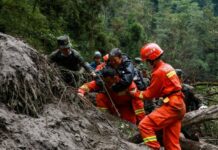
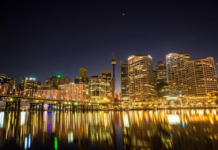
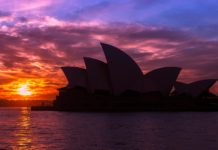
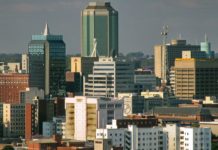
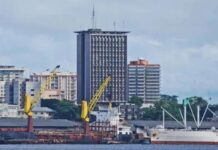
![Le chocolatier suisse Läderach développe une histoire d’amour avec la Chine [ INTERVIEW ]](https://www.afrique-54.com/wp-content/uploads/2023/12/Johannes-Laderach-et-chocolat-e1702548585357-218x150.jpg)








